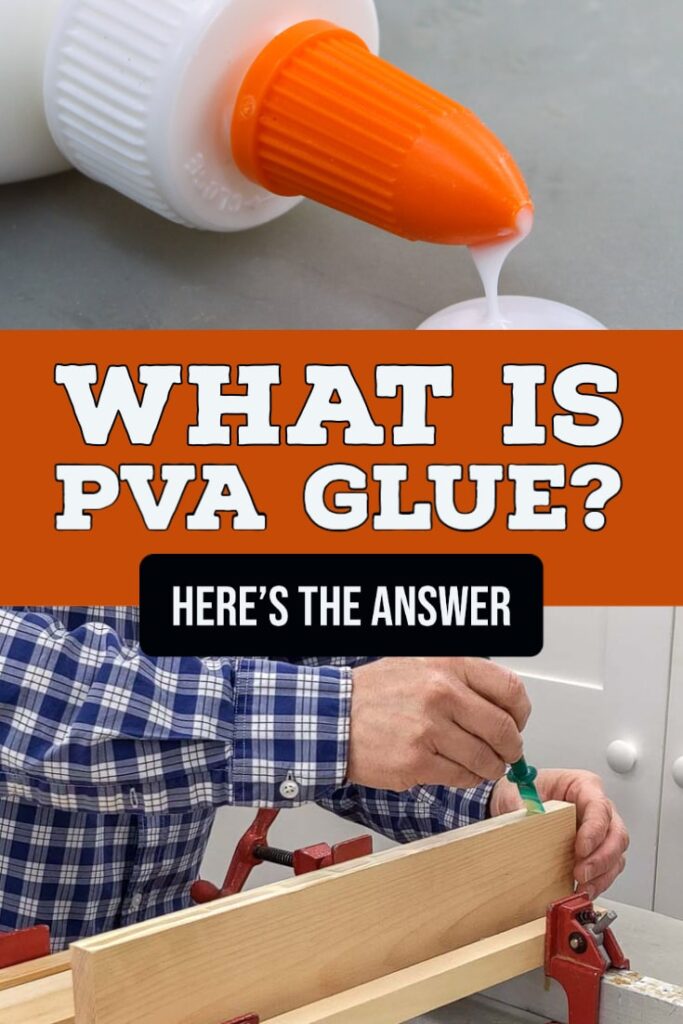What is PVA Glue?
PVA glue is a popular adhesive used for a variety of purposes. I’ll break down what it is, what makes it unique, and when it’s the right glue to use.
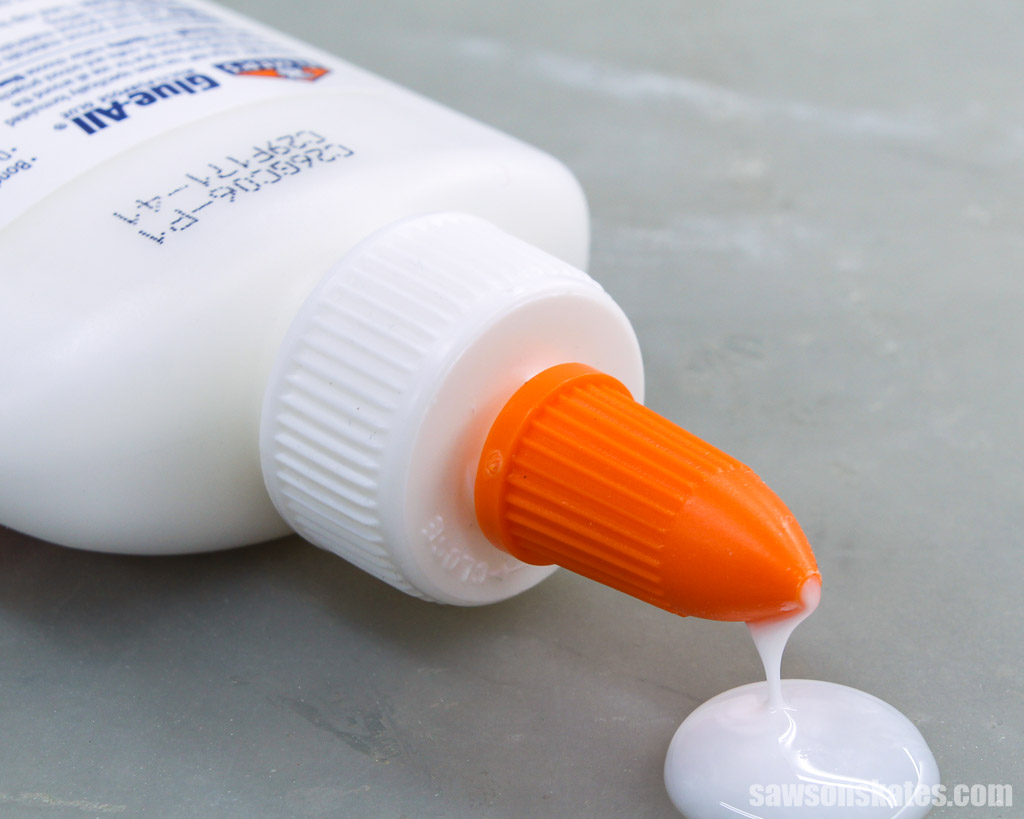
This tutorial contains affiliate links to supplies and tools. Purchases made using these links help support the Saws on Skates website and allows me to share more projects and tips with you. There is no cost to you for using these links. Visit my site policies for more information.
Table of Contents
- What is PVA Glue?
- Pros and Cons of PVA Glue
- Types of PVA Glue
- Most Common Uses of PVA Glue
- How to Choose PVA Glue for Your Project
- How to Use White PVA Glue
- How to Use Yellow PVA Glue
- How to Remove PVA Glue
- Alternatives to PVA Glue
- Best PVA Glues
- Frequently Asked Questions
What is PVA Glue?
The acronym PVA stands for polyvinyl acetate. Polyvinyl acetate is an aliphatic rubbery synthetic polymer, according to Wikipedia. Fritz Klatte, a German chemist, first discovered polyvinyl acetate in 1912.
Polyvinyl acetate is a colorless, odorless substance used in adhesives. PVA is a broad category or catchall term for adhesives, commonly referred to as white glue, school glue, wood glue, or carpenter’s glue.
PVA glues are safe, water-based, and non-toxic. They don’t produce fumes and are nonflammable, making them perfect for indoor use. They’re safe for handling with bare hands but should not be eaten. You’re probably asking yourself, who would eat glue? According to the Missouri Poison Center, school glue might cause minor stomach discomfort if ingested by children.
To bond, PVA glues must penetrate the surface, so they are ideal for working with porous materials like paper, wood, and plywood. PVA is ineffective on surfaces that don’t have texture or are smooth, such as plastic, metal, or glass.
PVA glue dries quickly and forms a permanent bond. Over time, other adhesives can become brittle and crack. On the other hand, PVA glues maintain their flexibility after drying rather than becoming brittle with age.
Polyvinyl acetate is pH neutral, meaning it does not affect the acidity or alkalinity of materials, making it a good choice for joining paper.
PVA glue is used for a range of tasks beyond bonding materials, including priming and sealing surfaces.
Back to Table of ContentsPros and Cons of PVA Glue
Pros
- Inexpensive and widely available
- Non-toxic and safe for bare hands (don’t ingest it)
- Nonflammable and doesn’t produce harmful fumes
- Dries quickly and forms a strong bond for most projects
- White version dries clear and doesn’t turn yellow over time
- Remains flexible even after it dries
- Doesn’t break down over time
- Doesn’t affect the pH balance of papers or anything else it contacts
Cons
- Won’t bond smooth surfaces like metal, plastic, or glass
- Because it breaks the polymer and makes the glue ineffective, liquid PVA should not be allowed to freeze.
- Can be painted, but does not absorb wood stain
- Needs to be clamped to bond and takes 24 hours to achieve full strength
- Some PVA glues are not water-resistant
Types of PVA Glue
There are two common types of PVA glue: white and yellow.
White Glue
White glue, often known as school glue or craft glue, is usually white in color. White glue bonds by penetrating the tiny pores in materials like paper and cloth. It goes on white but dries clear and doesn’t yellow over time. White glue is not water-resistant, so look for a water-resistant glue if you’re doing a project that will be used outdoors.
White glue is the sort of adhesive that elementary school kids have used for decades in art class to make paper collages, paper mache sculptures, and more. It’s also the adhesive adults use to create things like handmade cards, decoupaged furniture, fabric crafts, and mosaics.
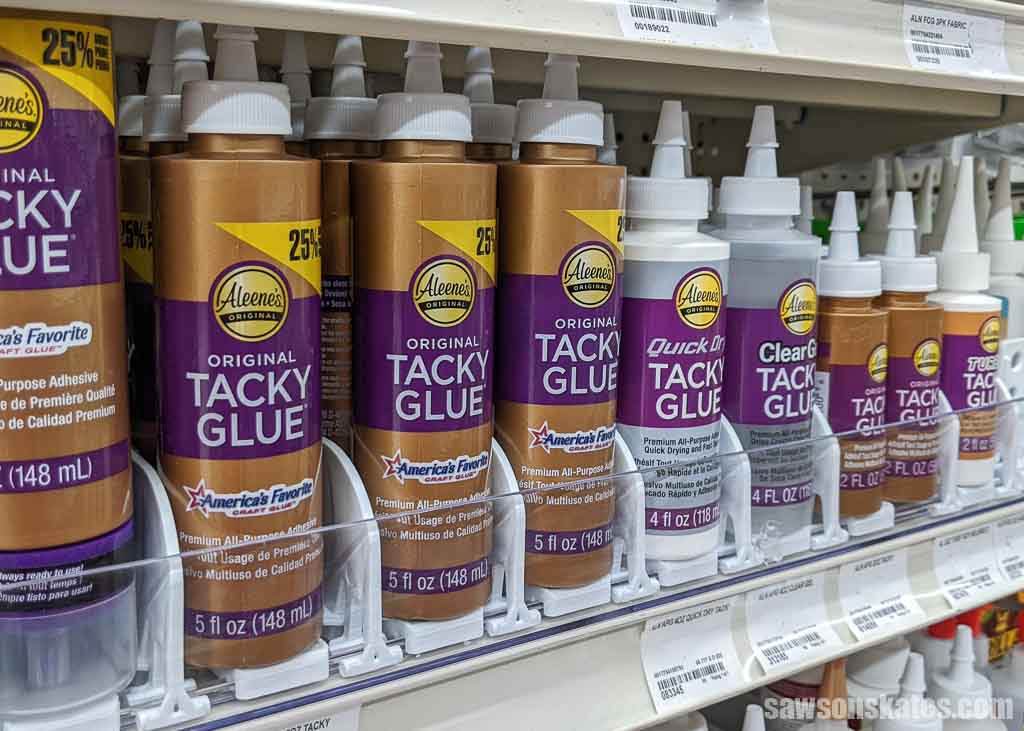
Wood Glue
Wood glue, also known as carpenter’s glue, is usually yellow or tan in color. It’s used for various woodworking tasks such as joinery, cabinetmaking, building furniture, and repairing wooden objects.
There are a few differences between wood glue and white glue. Wood glue creates a stronger bond and can be sanded.
Wood glue has a strong bonding ability, making it nearly unrivaled when joining wood.
When applied, the carpenter’s glue absorbs into the fibers, forming a joint stronger than the wood itself. The bond is so powerful that the wood near the joint will break before the glue joint fails.
Carpenter’s glue bonds better if pressure is applied while the adhesive is drying, so it’s important to use clamps. The pressure from the clamps pushes the glue into the wood pores, making a stronger bond.
Not all wood glues are water-resistant, so if you’re working on an outdoor project, be sure to use a water-resistant glue.
Water-Resistant Glue
Some wood glues are water-resistant. There’s a big distinction between water-resistant and waterproof. A waterproof glue will not dissolve when submerged in water, while water-resistant PVA glue can withstand light exposure to moisture. Be sure to do your research to ensure you get the right one for your needs.
Water-resistant wood glues resist moisture and mildew, making them perfect for outdoor projects like building benches, birdhouses, and planters.
Related: How to Make a Wall-Mounted Planter
If you’re working on an outdoor project, look for a glue like Titebond II or Titebond III with the label “water-resistant” to ensure you’re project will stand up to the elements.
Back to Table of ContentsMost Common Uses of PVA Glue
School Projects
Kids use white school glue for various things like making posters and creating art projects with construction paper, wood craft sticks, and more.
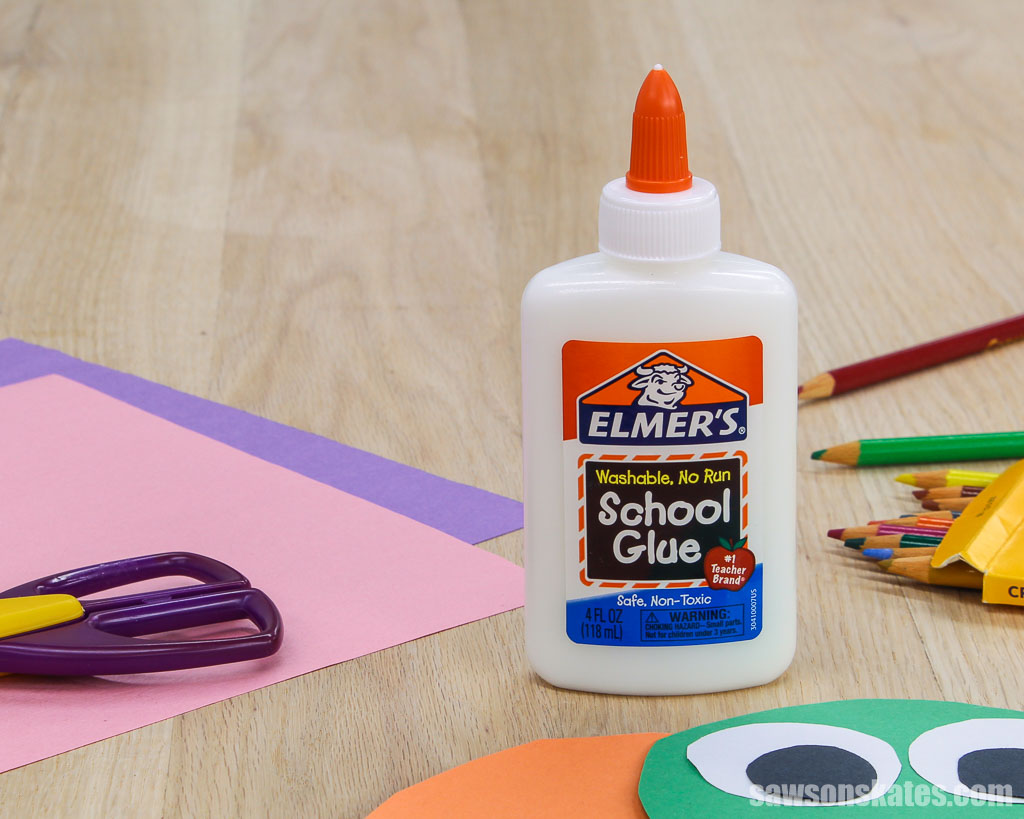
Arts and Crafts
Crafters use white craft glue for bonding paper projects like scrapbooking, making handmade cards, and paper mache. It’s also used for fabric crafts like bonding pieces of felt.
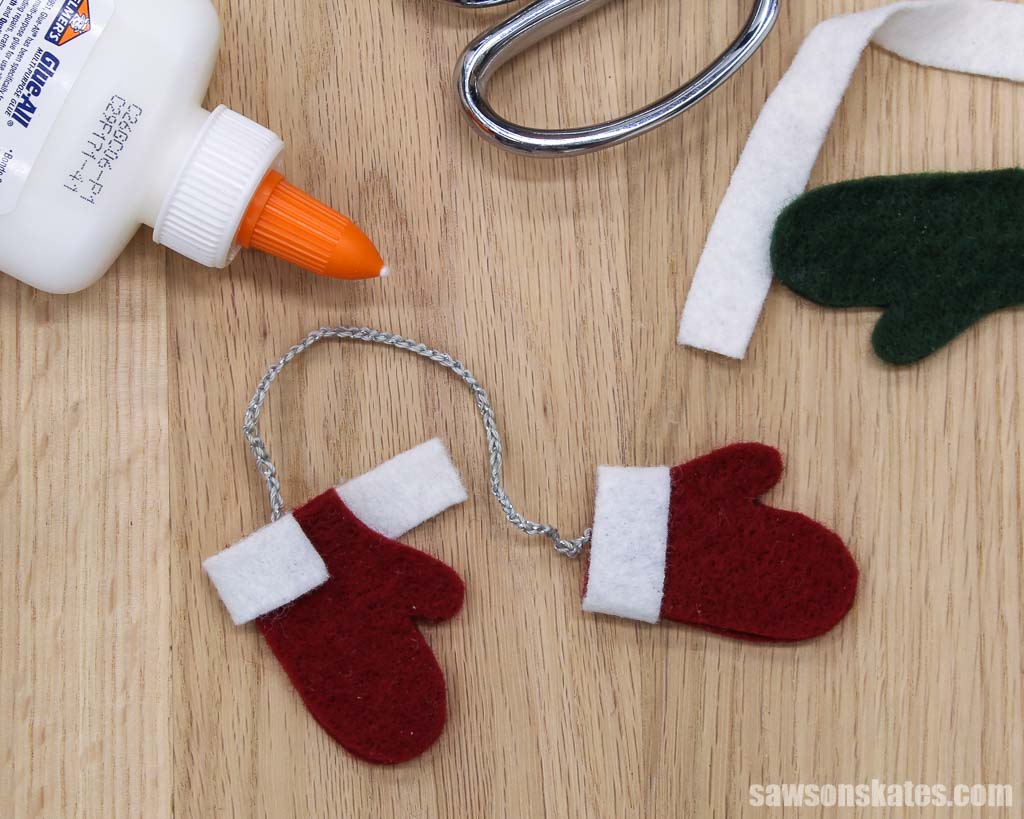
Craft glue is used for decoupage projects. Decoupage is a decorative technique in which various paper or fabric pieces are glued to the surface of objects like furniture, frames, and boxes. White glue dries clear, so it’s also used to seal and protect decoupage projects.
White glue is also used to create crafts like wooden ornaments and mosaics. A mosaic is a decorative technique where small pieces of wood are glued onto a backing such as plywood to create beautiful patterns.
Related: How to Make Christmas Picture Frame Ornaments
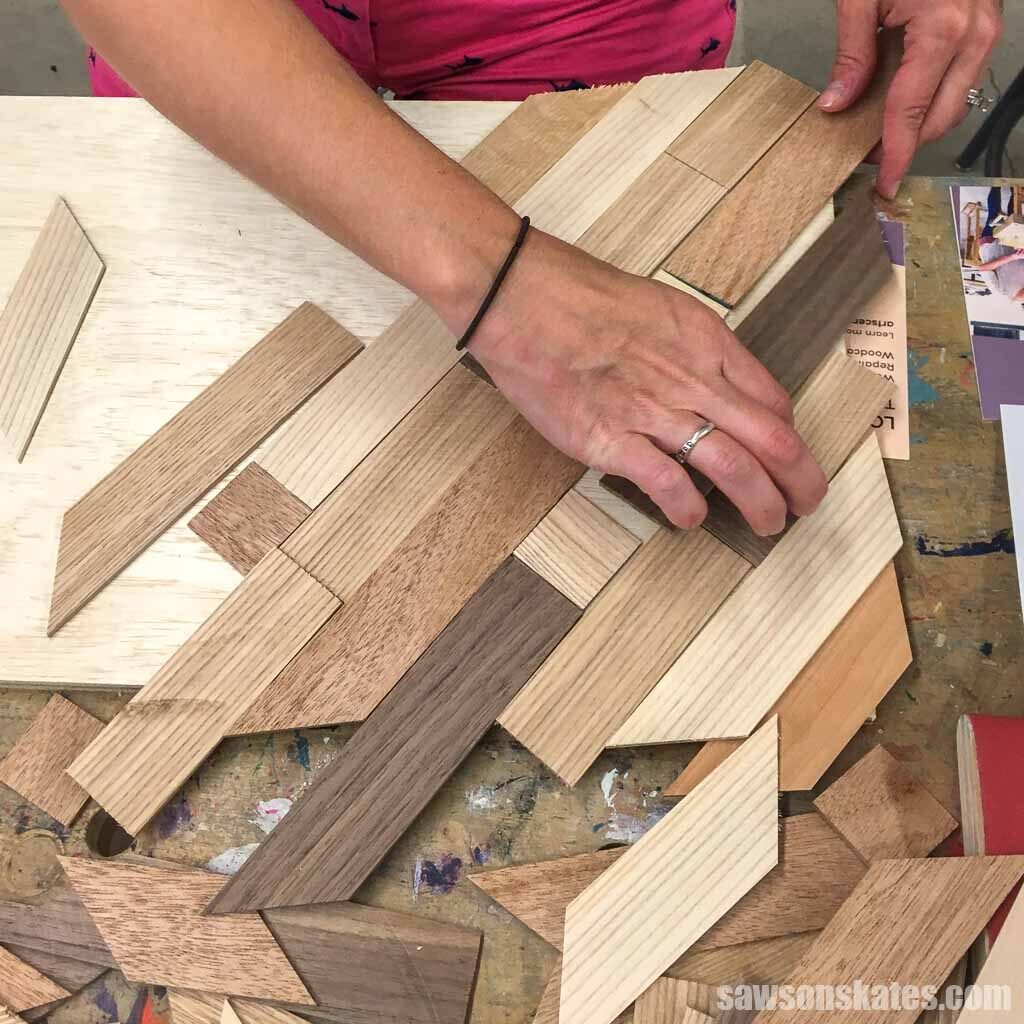
Woodworking
Woodworkers use wood glue for a variety of tasks such as joinery, cabinetmaking, building furniture, and repairing wooden objects.
You can mix carpenter’s glue and sawdust to make a wood filler that you can use on gaps or cracks in wood.
Related: Does Stainable Wood Filler Work? (Here’s the Answer)
Bookbinding
PVA glue is used for bookbinding, the process of assembling a book from a stack of folded paper sheets.
The adhesive is applied to the spine, and then the folded pages are glued to the cover material. PVA glue creates a strong bond and remains flexible, so it’s perfect for bookbinding. It dries clear but can be mixed with colored dyes to add interest.
PVA is also excellent for binding because it’s pH neutral. It helps to maintain the pH levels in the paper, which aids in keeping the pages whiter for a longer time.
Other Uses
- Envelope adhesive
- Wallpaper Adhesive
How to Use White PVA Glue
It’s simple to use school glue or craft glue. Just apply the adhesive where you want to connect the pieces of your project, apply light pressure, then wait for it to dry. It takes around 30 minutes for white glue to set and about an hour to dry.
Back to Table of ContentsHow to Use Yellow PVA Glue
Yellow glue is as simple to use as white glue. The difference is that wood glue or carpenter’s glue should be clamped for the best result. Remember to choose a water-resistant glue if your project will be used outdoors.
Squeeze a bead of yellow glue onto one surface of the wood you want to join.
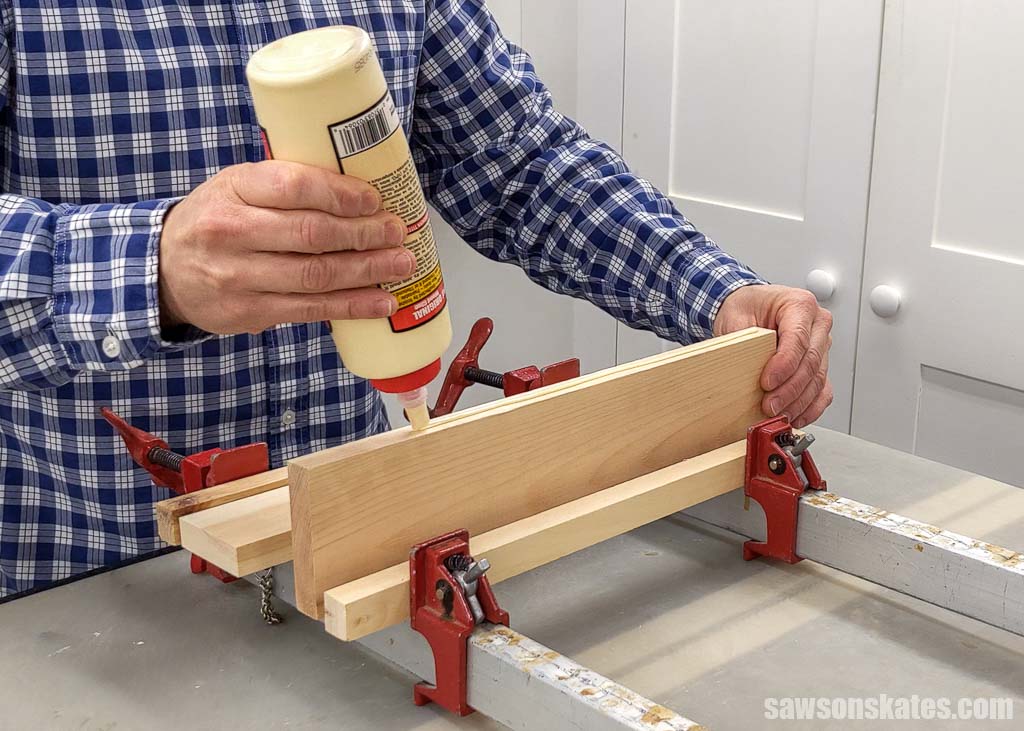
Use a glue spreader, glue brush, or finger to spread a thin coat of glue over the surface.
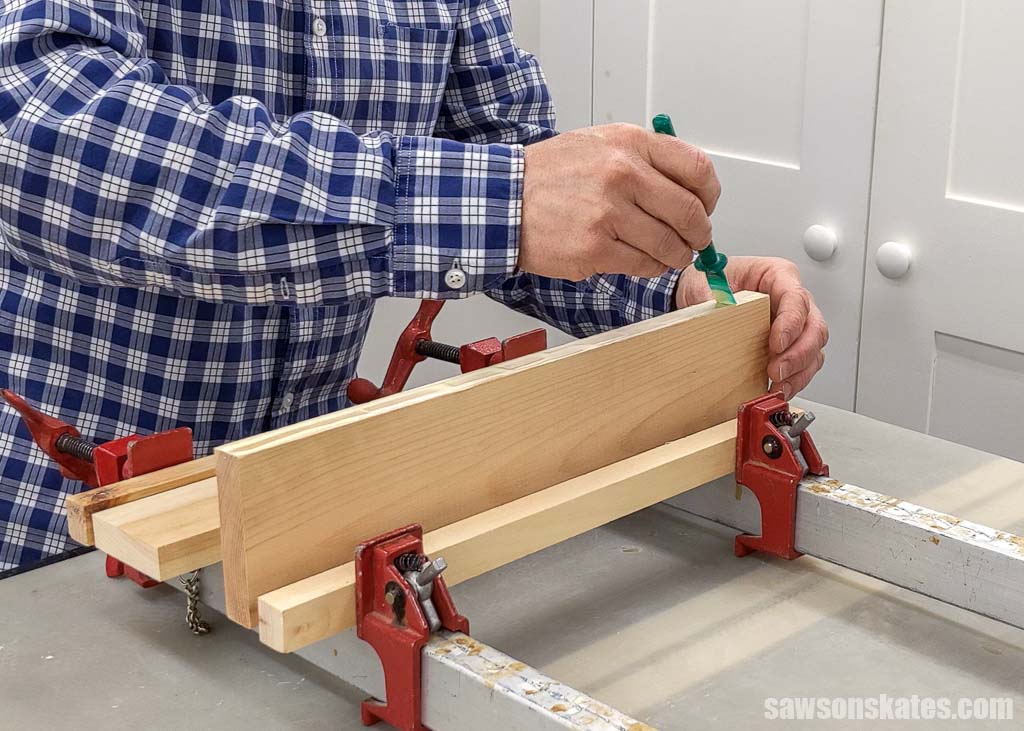
Gently push the pieces together, rubbing the surfaces back and forth to release any trapped air and evenly distribute the glue across both sides.
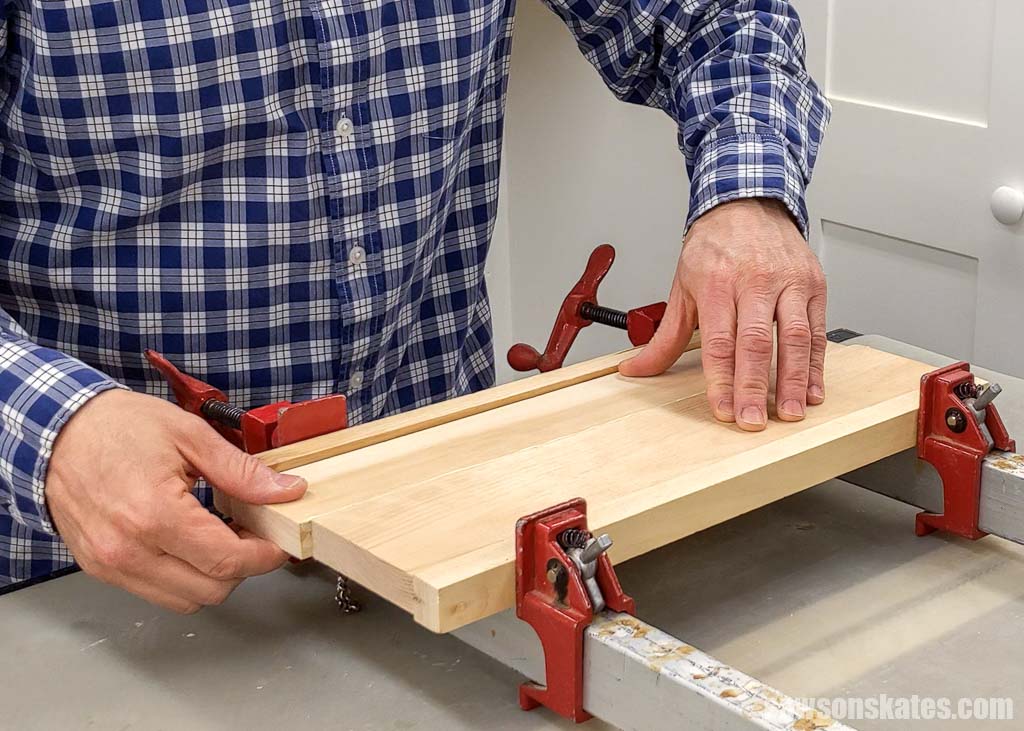
Keep the pieces in place with clamps while the glue dries. After about 30 minutes, scrape off any glue that squeezed out of the joint.
Manufacturers like Titebond recommend “clamping an unstressed joint for thirty minutes to an hour. Stressed joints need to be clamped for 24 hours. We recommend not stressing the new joint for at least 24 hours.”
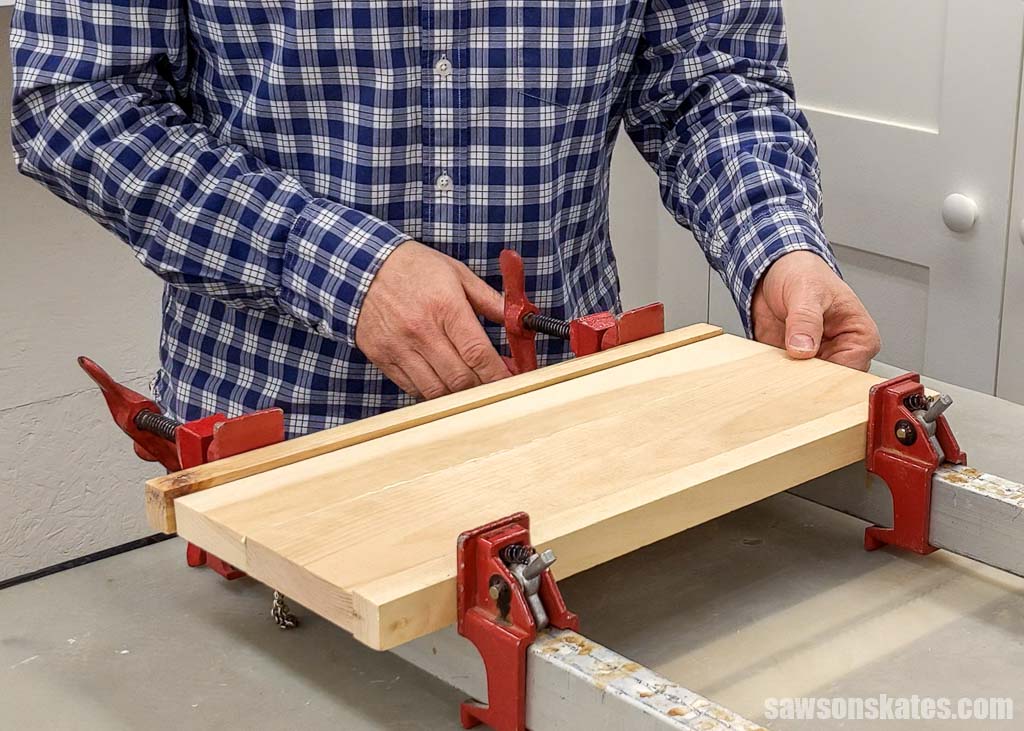
How to Remove PVA Glue
PVA glue is easy to remove before it dries. Simply wipe the glue away with a clean cloth dampened with water. It’s more difficult to remove after it has hardened and the technique used depends on the surface where it dried.
Remove PVA Glue From Clothing
First, read the washing instructions on your garment’s label. Next, pour some clean, warm water into a container. The water does not need to be at boiling temperature, but it should be somewhat hot. If your clothing’s label indicates that it will shrink when washed in hot water, you may want to use lukewarm water instead.
Next, dip the clothing into the water and let it soak for a few minutes. The warm water will help to soften the glue. You can also apply soap or detergent to the stain and use your hands to rub and agitate the area. If there is any glue remaining, repeat the process until your clothing is clean.
If you have a washing machine, use it to wash the clothing as usual.
Removing PVA Glue From Wood
A paint scraper may be used to remove dried glue from wood, such as along the seams where it squeezed out of a joint. A sander can also be used to remove any remaining dried glue.
Removing wood glue from joints is more difficult and might not be possible depending on how effectively the glue bonded to the wood.
One method is to soften the glue by heating it with a hairdryer or heat gun. Be sure to follow all of the safety instructions for your heat gun and work in a safe area.
Apply heat to the glued area for several minutes, being careful not to scorch the wood. The glue should eventually begin to soften, at which point you can try to remove it with a putty knife or paint scraper. Continue heating and scraping until all of the glue is removed.
Back to Table of ContentsAlternatives to PVA Glue
Epoxy Glue
Epoxy, a type of resin, comes in two parts. When the parts are mixed, it forms a strong and durable adhesive great for projects that need a lot of hold. It’s waterproof, making it ideal for outdoor projects. Epoxy cures quickly, which means you do not have to wait long for the project to be completed.
Polyurethane Glue
Polyurethane glue can be used for a wide range of applications. Unlike wood glue, polyurethane glue can bond porous and nonporous surfaces like stone, metal, and glass.
Another difference between wood glue and polyurethane glue is that polyurethane glue requires moisture to harden. For polyurethane glue to bond, both surfaces need to be dampened with water before applying the glue.
Polyurethane glue also expands as it dries. The advantage is this expansion is ideal for filling uneven gaps and irregular surfaces. The disadvantage is that it can push joints apart if they are not clamped firmly.
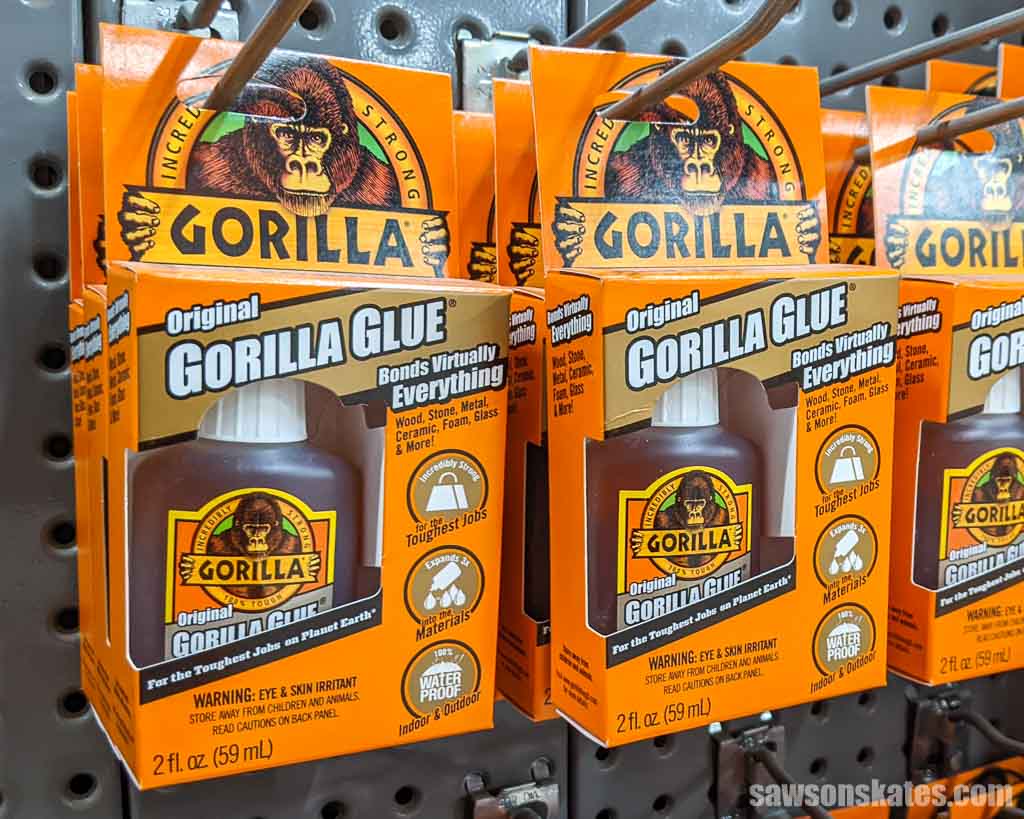
Frequently Asked Questions
What is a substitute for PVA glue?
Substitutes for PVA glue include epoxy, polyurethane glue, and hide glue. Epoxy is a two-part resin that, when mixed, forms a strong and durable adhesive that’s great for projects requiring a lot of grip. It’s also waterproof, making it ideal for outdoor projects.
Polyurethane glue is a versatile adhesive that can be used to join porous and nonporous materials such as stone, metal, and glass.
Hide glue is an animal-based glue that has been used for centuries. It dries quickly and used for a variety of projects, including woodworking and making instruments.
Back to Table of ContentsFinal Thoughts
If you’re looking for an adhesive for your crafts and DIY projects that’s safe to use, non-toxic, and doesn’t produce fumes, PVA glue is a great option. Just make sure the surfaces are porous so the glue can penetrate. These glues work well with materials like paper, wood, and plywood.
Thank you for stopping by. If you enjoyed this tutorial, would you please take a moment and pin it to Pinterest? I’d really appreciate it!




